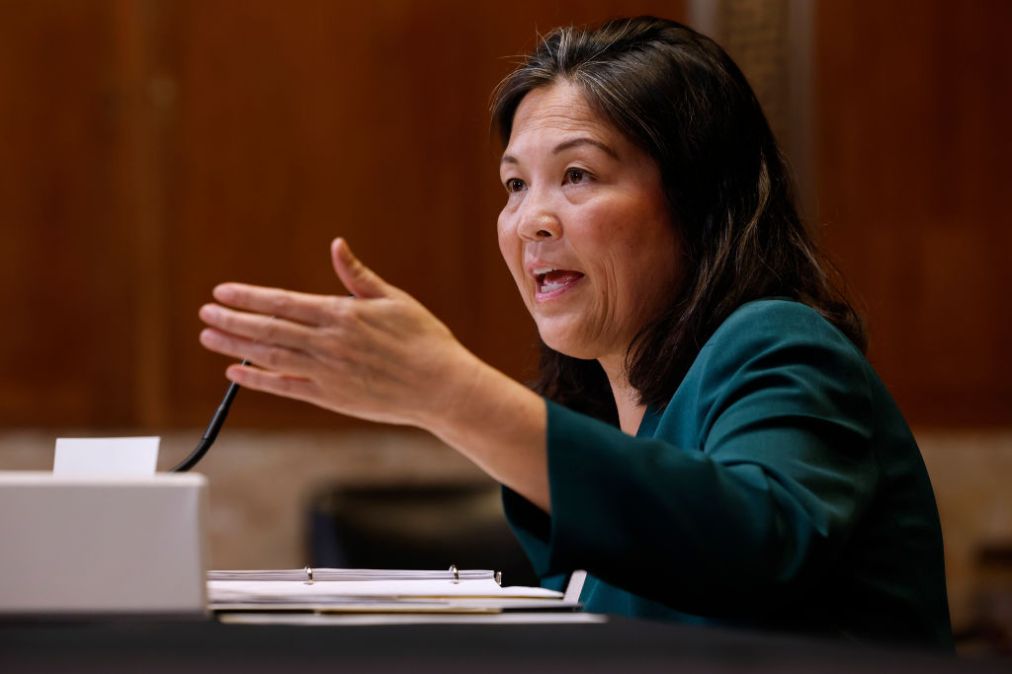Labor Department’s AI roadmap geared toward ‘worker empowerment’

The Department of Labor is spelling out how artificial intelligence can boost job quality without harming the rights of workers, releasing a roadmap this week that aims to empower workforces in underserved communities as use of the emerging technology proliferates.
The 17-page document, titled “Artificial Intelligence and Worker Well-Being: Principles and Best Practices for Developers and Employers,” details eight key priorities for AI companies and management to follow that are intended to keep the focus on “centering worker empowerment and well-being.”
“We have a shared responsibility to ensure that AI is used to expand equality, advance equity, develop opportunity and improve job quality,” Acting Secretary of Labor Julie Su said in a statement. “These Best Practices provide a roadmap for responsible AI in the workplace, helping businesses harness these technologies while proactively supporting and valuing their workers. As we embrace the opportunities that AI can offer, we must ensure workers are lifted up, not left behind.”
The eight principles identified by DOL for developers and employers are centering worker empowerment; ethically developing AI; establishing AI governance and human oversight; ensuring transparency in AI use; protecting labor and employment rights; using AI to enable workers; supporting workers impacted by AI; and ensuring responsible use of worker data.
Centering worker empowerment is considered by DOL to be the document’s “North Star.” That principle pushes employers and developers to integrate “early and regular input from workers into the adoption and use of AI.” The agency also urges employers to bargain with unions “in good faith on the use of AI and electronic monitoring in the workplace.”
Organized labor leaders applauded the department’s work on the issue during a Wednesday event to unveil the AI roadmap. David Miller, SEIU United Healthcare Workers’ research director and assistant to the president for strategic campaigns, said that “the advantages gained from AI need to be fairly distributed among patients, payors, health care workers and providers, with special attention to workers who might see their work transformed by the new technology.”
AFL-CIO President Liz Shuler, meanwhile, said that DOL’s “new AI best practices are an important new tool to help employers understand the value of engaging their workers to ensure that these technologies actually improve productivity, work and workers’ lives.”
The document’s section on protecting labor and employment rights doubles down on the worker empowerment principle, directing employers to not use AI systems that “have a chilling effect on labor organizing” or introduce worker-impacting AI that is “used to reduce wages, break time, or benefits workers are legally due.”
The roadmap also pushes employers to provide training opportunities for workers interested in using AI systems, ensure that employee data is secured from “internal and external threats,” encourage employees to voice concerns about how the technology is deployed, and maintain transparency when integrating new systems into operations, among many other recommendations.
On the developer side, the Labor Department wants to make sure that “data inputs used to train AI systems meet basic human rights, domestic and international labor standards,” that impact assessments and independent audits are periodically conducted on AI tools, and that standards are established to safeguard the civil rights of workers and reduce risks to their safety.
“Whether AI in the workplace creates harm for workers and deepens inequality or supports workers and unleashes expansive opportunity depends (in large part) on the decisions we make,” Su wrote in the document’s introductory note. “The stakes are high. But with these best practices and principles, guided by President Biden’s and Vice President Harris’s leadership, we can seize this moment and promote innovation and prosperity for all.”






